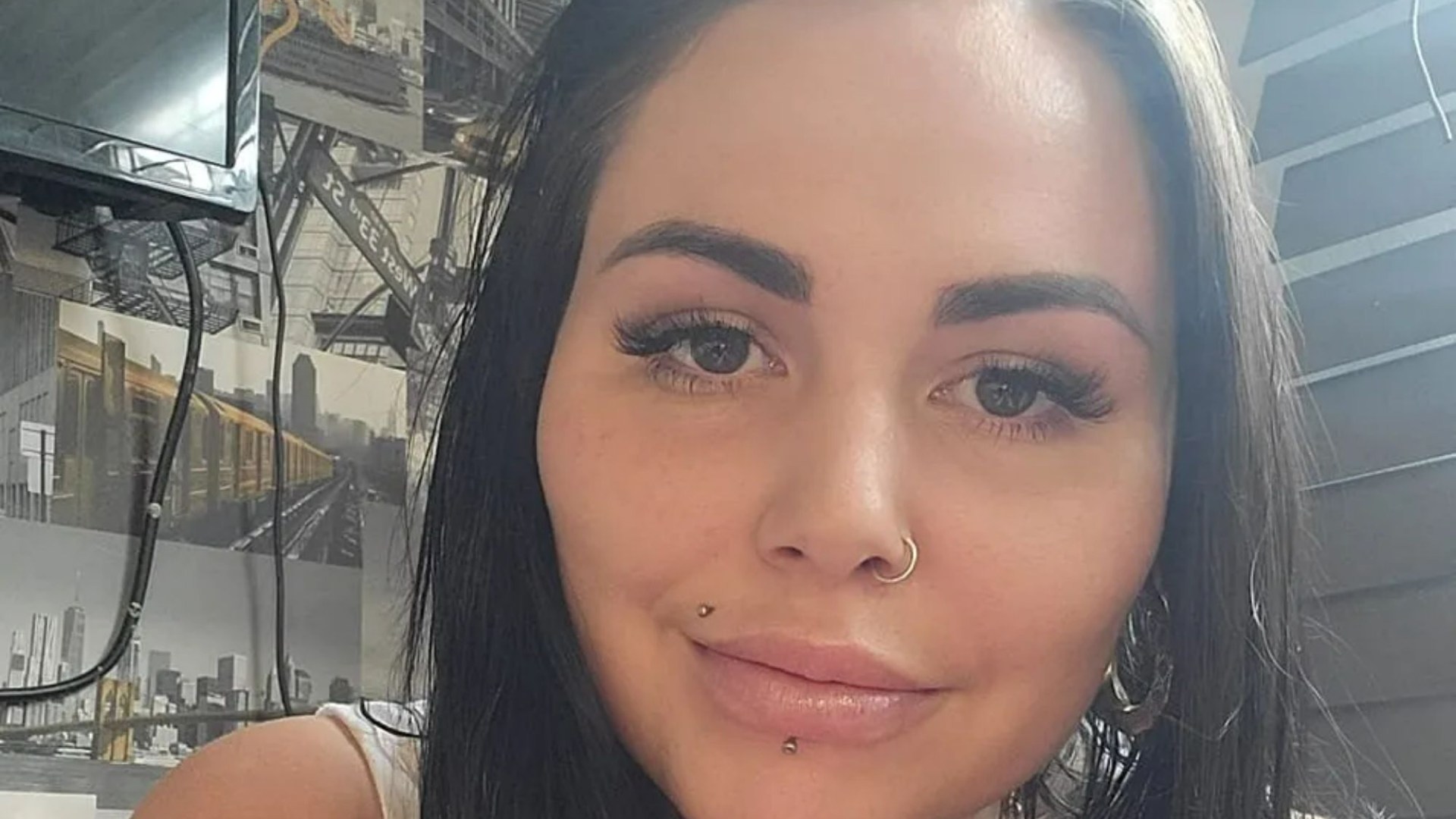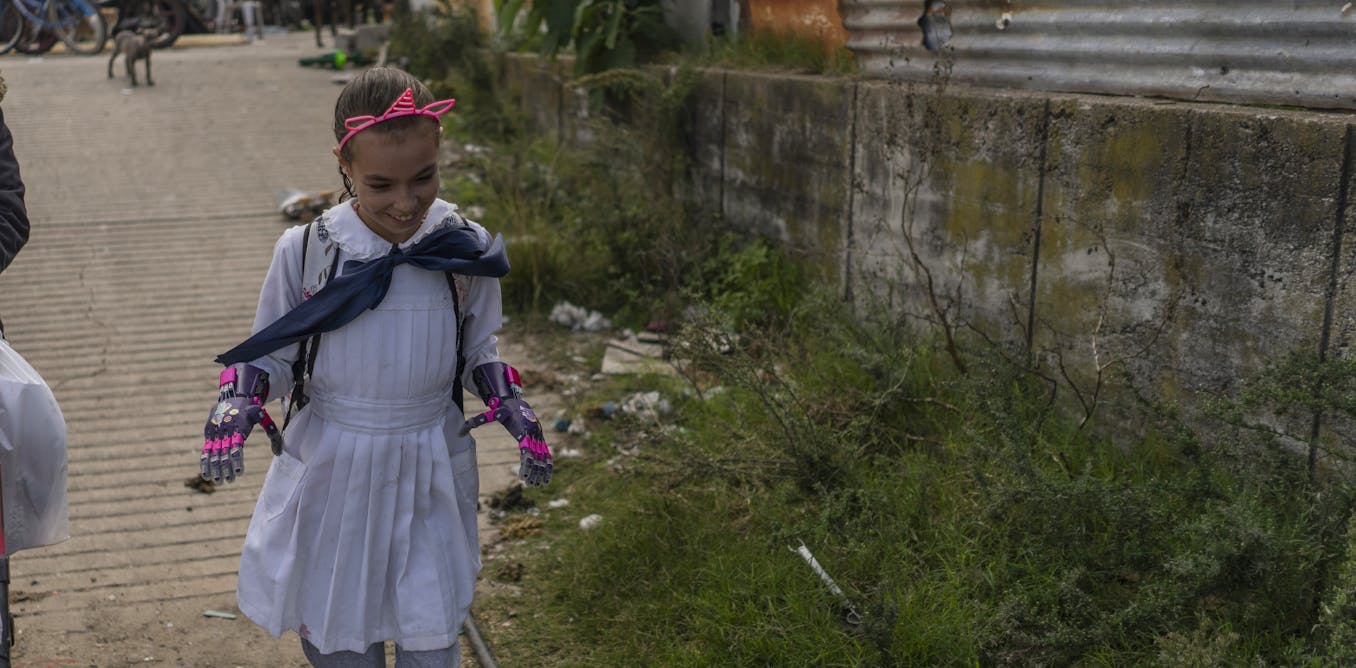THOUGH it feels like getting surgery and tweakments to enhance our appearance is everywhere these days, the procedures don’t come without risks.
This was made especially clear with the tragic death of Alice Webb, 33, a mum-of-five who died after a Brazilian Bum Lift (BBL) operation “went wrong”.
14

14

14

14
Alice underwent a non-surgical BBL – which usually involves injecting filler into the bum – at a studio in Gloucester on Monday evening.
She was rushed to Gloucestershire Royal Hospital when the procedure went wrong and passed in the early hours of Tuesday.
The 33-year-old is the first person to die of a liquid BBL performed in the UK, according to campaign group Save Face, a national register of accredited practitioners who offer non-surgical cosmetic treatments.
In the wake of her death, two people have been arrested on suspicion of manslaughter.
The dangers of surgical BBLs are well documented.
The risky procedure involves transferring fat from another area of the body to the bum and has resulted in the deaths of at least 28 Brits over the past few years.
But as liquid BBLs see a surge in popularity, experts have increasingly sounded the alarm about them – not least because they’re often performed by unqualified traders in unsuitable environments.
Save Face’s director Ashton Collins told The Sun: “Liquid BBL procedures are a crisis waiting to happen.
“They are advertised on social media as ‘risk-free’, ‘cheaper’ alternatives to the surgical counterpart and that could not be further from the truth.
“We have supported over 500 women who have suffered complications because of these treatments, many of which have nearly died.
“Over 50 per cent of the cases reported to us contracted sepsis and 39 per cent needed corrective surgery.
“All of the procedures reported to us were carried out by non-healthcare practitioners who are carrying out incredibly dangerous procedures in unsterile environments.”
Here, we lay bare just how dangerous liquid BBLs can be and speak to medical practitioners about how to get the procedure done safely.

14

14

14

14
SURGICAL VS NON-SURGICAL BBLS
There are two types of BBLs, surgical and non-surgical.
During buttock enlargement surgery, surgeons transfer fat or insert silicone-filled implants, to make the bum look bigger, rounded and lifted.
It is the fastest growing cosmetic procedure but also one of the most dangerous, according to the British Association of Aesthetic Plastic Surgeons (BAAPS).
Many patients travel to the likes of Turkey or seeking out unregistered surgeons in the UK and are not given full information on the risks.
BBLs carry the highest risk of all cosmetic surgeries – with more than one death occurring per 4,000 procedures.
Melissa Kerr, 31, from Gorleston, Norfolk, died in 2019 when a fatal clot travelled to her lungs following a £3,200 procedure at an Istanbul clinic.
Leah Cambridge, 29, also died from a blood clot during a £6,500 surgery in Turkey.

14

14
She had fat extracted from her waist and injected into her buttocks but surgeons accidentally struck a vein, causing three heart attacks.
Non-surgical BBLs, also called liquid BBLs, usually involve injecting hyaluronic acid – the same material used for lip filler – into the bum to shape it and add volume.
It’s often advertised as less invasive, cheaper and having a faster recovery time than surgery, though its results aren’t permanent.
But the so-called “risk-free” procedure can result in devastating complications for some.
DEADLY RISKS OF BBLS
Dr Omar Tillo, a plastic surgeon and senior medical director at CREO Clinic, told The Sun: “Both surgical and liquid BBLs have risks just like any cosmetic procedure.”
He and Dr Tristan Mehta, founder and CEO of medical aesthetics education provider Harley Academy, stressed the importance of understanding the risks presented by each before considering a bum-enhancing procedure.
“In both procedures, the risk of permanent disfigurement or serious health complications is real and should not be underestimated,” Dr Mehta told The Sun.
Dr Tillo said: “For surgical BBLs, issues like infections, blood clots, fat embolisms or tissue damage can happen.
“Infections may occur if the wound isn’t cared for properly and blood clots can develop due to lack of movement after surgery.
“Fat embolisms are where fat enters the bloodstream and causes blockages in the lungs or heart, they are very serious and can be life-threatening.”
According to Dr Mehta, other complications include:
- Excessive bleeding
- Nerve damage
- Necrosis (death of tissue)
- Asymmetry as a result of poor fat grafting techniques
- Lumpiness
- Fat re-absorption, causing the procedure to fail
- Sepsis
As for liquid BBLs, infections are also a concern.
People can also experience allergic reactions to products used and the filler can shift after the procedure, Dr Tillo warned.
Dr Mehta added: “Complications include vascular occlusion – blockage of blood vessels – which can lead to skin necrosis and scarring.
“The use of unapproved or unsafe filler materials can result in chronic inflammation, infections, or even life-threatening reactions.”
Earlier this year, Monique Sofroniou, 30, detailed how she was left fighting for her life after a liquid BBL performed in a hotel room.
Monique’s skin broke out in blisters that “started to pop”, leaving “filler and blood” oozing out of her bum and she developed life-threatening sepsis that landed her in hospital.

14

14

14

14
Meanwhile, 29-year-old Laura Bassnett was rushed to A&E after paying £2,000 to have filler injected into her buttocks, and was left fearing she’d lose a limb as she lost feeling in her left leg.
And Melissa Crawford, 30, was left in “excruciating” pain after abscesses began to form in bottom following her liquid BBL.
She was forced to have the filler surgically removed and now has two “bullet wound” holes as a gruesome reminder of her ordeal.
“If you notice any signs like pain, swelling, redness or trouble breathing, it’s important to get medical help right away,” Dr Tillo stressed.
“Acting quickly is key to preventing further complications.”
BAN LIFE-THREATENING BBLS
Save Face has repeatedly called for an all-out ban on liquid BBLs, doubling down on their campaign following the mum’s passing.
In a report, the group said that 479 patients have complained to them about botched non-surgical bum lifts and hip dip procedures – all undertaken by non-healthcare rogue practitioners – since 2022.
Save Face also received 28 complaints for non-surgical breast augmentation ops.
“The severity of complications caused by these procedures is alarming,” it said.
Over 50 per cent of the cases reported to the campaign group have resulted in severe and life-threatening complications, such as infections, sepsis, and abscesses that have required hospital admission and even surgical intervention.
A whopping 68 per cent of complaints involved infections and 53 per cent of patients suffered sepsis, a life-threatening reaction to an infection that can be deadly if not treated promptly.
Alice’s tragic death

Alice Webb, 33, was having a non-surgical BBL at a studio in Gloucester when it “went wrong”.
The mum-of-five was travelled from her home in Wotton-under-Edge to a clinic in Gloucester for a training session where she would learn how to perform the procedure before having her own done.
She rushed to Gloucestershire Royal Infirmary later that night, where she passed away in the early hours of September 24.
Her devastated partner Dane Knight, 38, posted a tribute online saying: “Want to say a heartfelt thank you to all family and friends that were here for us at our time of need, including all of the kind messages sent to my children and myself.”
Alice’s “second mum” Dianna Webb, 58, said she told her younger cousin she did not need the procedure only hours before she died after going under the knife.
A tearful Diana told The Sun: “We had talked about it a lot before she went to have the procedure.
“She had told me she was going to have this done and I said she didn’t need it – she already looked beautiful.
“And she was stunning on her own.
“We were on the phone for two hours before she went. Alice said they seemed really professional and put her at ease about the procedure.”
Two people were arrested following Alice’s death, one of them Jordan James Parke, a Kim Kardashian-obsessed TV star dubbed the “Lip King”.
Another 32 per cent of complainants suffered abscesses after their non-surgical procedures, and 5 per cent had necrosis – when tissue dies due to too little blood flow.
Unsightly outcomes following the procedures were also reported in 63 per cent of cases, as well as severe pain, hard lumps, and filler migration.
Almost all – 96 per cent of complainants – were forced to access NHS care and 91 per cent required hospital treatment.
Thirty-nine per cent needed surgery afterwards.
All the of the non-surgical breast and bum procedures that Save Face received complaints about were carried out by non-healthcare practitioners, the damning report stated.
In most cases, patients found the practitioners on social media.
Over half of the treatments were carried out in beauty salons and 34 per cent were done in homes or hotel rooms.
And 96 per cent of the patients had no idea what product was injected into their body.
“The majority of complications reported to us are life-threatening and misdiagnosis by the practitioners led them to become worse,” Save Face stated in its report.
“In one case, a patient was told she had an hour to live by an NHS surgeon and had to have an emergency operation to remove necrotic tissue and infected filler.”
HOW TO SPOT DANGERS
A number of factors can drive up the risk of experiencing complications after having a BBL done.
Both Dr Tillo and Dr Mehta pointed to the fact that the non-surgical ops are regularly performed by poorly-qualified people.
Dr Mehta stressed: “The risk of complications is significantly heightened when these procedures are performed by unqualified practitioners or in non-regulated environments.”
He outlined several key factors that increase the likelihood of complications.
1. Rogue traders
“Individuals without proper medical training or certification may lack the necessary understanding of anatomy, sterile technique, and the ability to manage complications,” Dr Mehta explained.
“They may also use improper methods or unsafe materials that can cause serious harm.”
2. Unregulated facilities
“Procedures carried out in unregulated settings may lack basic medical standards, including infection control, resuscitation equipment, and the ability to manage post-procedure complications,” Dr Mehta said.
Dr Tillo added: “For liquid BBLs, using low-quality or non-approved fillers can cause infections or bad reactions.
“A dirty or unsanitary environment can also increase the chance of infection.
3. Underlying health problems
Having certain health conditions can mean it’s not wise for your to seek out a BBL, surgical or otherwise.
According to Dr Mehta: “High-risk patients, such as those with underlying health conditions, obesity, or smokers, are more likely to experience complications during or after surgery.
“An unqualified practitioner may not screen patients adequately or may proceed with a procedure despite red flags.”
4. Poor technique
“Whether it’s poor fat grafting in surgical BBLs or unsafe injection techniques in liquid BBLs, technical mistakes can lead to devastating outcomes, including nerve damage, excessive scarring, and in extreme cases, death,” Dr Mehta said.
LEGAL ‘LOOPHOLES’
Dr Nora Nugent, vice president of the British Association of Aesthetic Plastic Surgeons, told MailOnline that there are “loopholes” in the UK that allow non-medical practitioners to inject people with fillers despite having very little training.
She said: “This is totally outside of a regulated environment.
“It is an issue in UK.
“It is a medical procedure, but it is not seen as such in a regulatory sense. It can have seriously dangerous consequences.’
Dr Nugent said that there is no mandatory training for non-surgical BBLs.
She explained that while it is recommended and most non-medical practitioners have done a short raining course, some have not even done this before they start performing.
BBL safety tips
If you are considering getting a BBL, there are some key things you can do to ensure that the procedure is as safe as possible.
The first and most important step is to seek out a qualified and experienced medical practitioner.
Here are the key steps to ensure a safe procedure:
- Verify the practitioner’s credentials: Ensure the surgeon or aesthetic practitioner is properly trained, qualified, and registered with the General Medical Council (GMC) for surgical procedures, or trained in non-surgical aesthetics with a reputable provider, like Harley Academy, for injectable treatments.
- Ask about their experience: It is essential to choose a practitioner who has extensive experience with BBLs. Ask how many procedures they have performed and about their complication rates.
- Ask about materials used: For liquid BBLs, check that only UK or European approved fillers are used and that strict hygiene standards are followed
- Clinic safety standards: The procedure should be carried out in a regulated medical facility that meets high standards of hygiene, has proper equipment, and can handle emergencies. For surgical BBLs, this means a licensed surgical centre with proper accreditation.
- Realistic expectations and clear communication: A responsible practitioner will take the time to fully explain the risks and manage expectations. Patients should always be informed about both the best and worst outcomes, and there should be a comprehensive discussion of the aftercare and recovery process.
- Avoid cut-price deals: Cheaper is not better when it comes to cosmetic procedures. Be wary of low-cost deals or practitioners offering services without proper medical oversight. This can often be a red flag for unsafe or unregulated treatments.
- Be open about your medical history: During your consultation, you should be open about your medical history and medications and ask detailed questions about the procedure.
- Be diligent about aftercare: Following all aftercare instructions and going to follow-up appointments can help prevent problems and ensure a safe recovery.
- Be wary about travelling abroad: Following all aftercare instructions and going to follow-up appointments can help prevent problems and ensure a safe recovery.
Love Island star Olivia Attwood touched upon the issue in her documentary ‘The Price of Perfection’, in which Save Face’s Ashton Collins was interviewed.
Olivia asked her: “As it stands in the UK now, anyone can inject someone with filler and it’s not against the law?”
Ashton replied: “It is totally unregulated. We’ve investigated people working in retail a week ago, done an online course, bought their products over the internet and start injecting people.
“We want bum and boob fillers completely banned, they are just so unsafe.”
Speaking to The Sun, Ashton said: “I am flabbergasted and appalled by the unscrupulous nature of the people who are still offering these treatments even though they know some of their patients have been hospitalised and will no doubt continue to do so after hearing this awful news.
“It is outrageous that laypeople feel it is appropriate for them to offer treatments that surgeons will not perform because they are too dangerous.”




